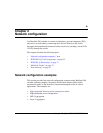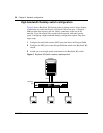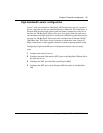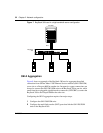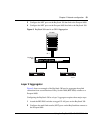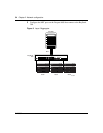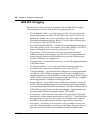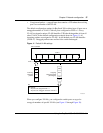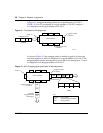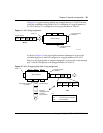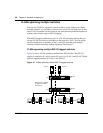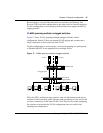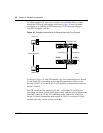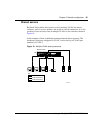
56 Chapter 2 Network configuration
212859-A
IEEE 802.1Q tagging
BayStack 380 switches operate in accordance with the IEEE 802.1Q tagging
rules. Important terms used with the 802.1Q tagging feature are:
• VLAN identifier (VID)—the 12-bit portion of the VLAN tag in the frame
header that identifies an explicit VLAN. When other types of VLANs are
enabled, this default value can be overridden by the values enabled in the
Web-based management interface. Refer to Using Web-Based Management
for the BayStack 380 10/100/1000 Switch.
• Port VLAN identifier (PVID)—a classification mechanism that associates a
port with a specific VLAN. For example, a port with a PVID of 3 (PVID =3)
assigns all untagged frames received on this port to VLAN 3.
• Tagged frame— the 32-bit field (VLAN tag) in the frame header that
identifies the frame as belonging to a specific VLAN. Untagged frames are
marked (tagged) with this classification as they leave the switch through a
port that is configured as a tagged port.
• Untagged frame— a frame that does not carry any VLAN tagging information
in the frame header.
• VLAN port members— a set of ports that form a broadcast domain for a
specific VLAN. A port can be a member of one or more VLANs.
• Untagged member—a port that has been configured as an untagged member
of a specific VLAN. When an untagged frame exits the switch through an
untagged member port, the frame header remains unchanged. When a tagged
frame exits the switch through an untagged member port, the tag is stripped
and the tagged frame is changed to an untagged frame.
• Tagged member—a port that has been configured as a member of a specific
VLAN. When an untagged frame exits the switch through a tagged member
port, the frame header is modified to include the 32-bit tag associated with the
PVID. When a tagged frame exits the switch through a tagged member port,
the frame header remains unchanged (original VID remains).
• User priority—a three-bit field in the header of a tagged frame. The field is
interpreted as a binary number, therefore has a value of 0 - 7. This field allows
the tagged frame to carry the user-priority across bridged LANs where the
individual LAN segments may be unable to signal priority information.
• Port priority—the priority level assigned to untagged frames received on a
port. This value becomes the user priority for the frame. Tagged packets get
their user priority from the value contained in the 802.1Q frame header.




